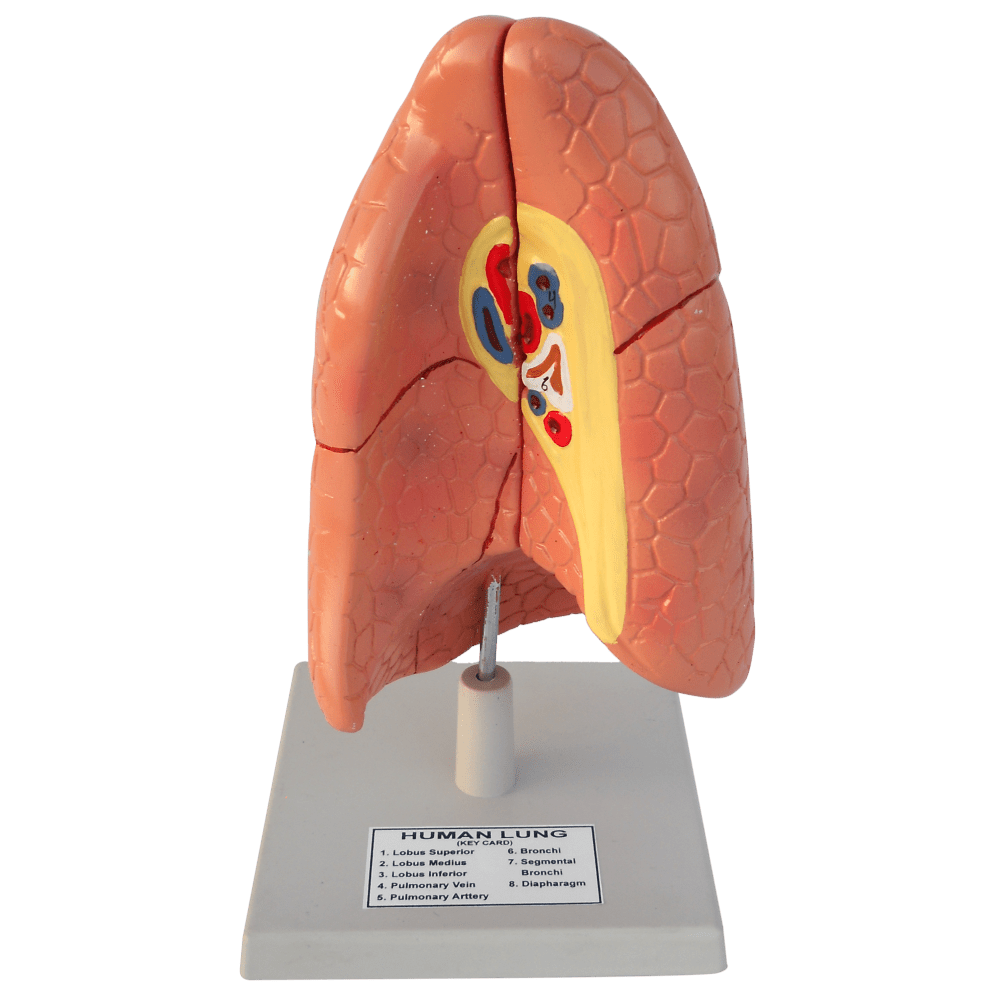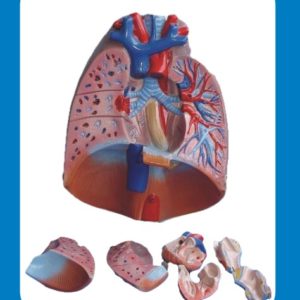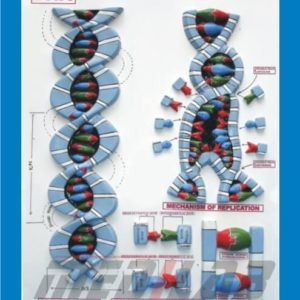Description
A human lung model is a representation of the human lung system that is used for educational, research, or medical purposes. The model can be a physical replica, a computer simulation, or a combination of both. Human lung models are typically used to teach students about the anatomy and physiology of the respiratory system, to simulate medical procedures and surgeries, or to demonstrate the effects of diseases and conditions such as asthma, chronic obstructive pulmonary disease (COPD), and lung cancer.
Physical models of the human lung are usually made from plastic, silicone, or rubber, and they may be cut away to show the internal structures of the lung, such as the bronchi, alveoli, and pleural cavity. Computer simulations of the human lung can be interactive and allow users to manipulate the virtual model to better understand the different parts of the lung and how they work together.
Human lung models can be highly detailed and accurately represent the size, shape, and structure of the human lung. They can be useful tools for medical professionals, students, and anyone who wants to learn more about the human respiratory system.







